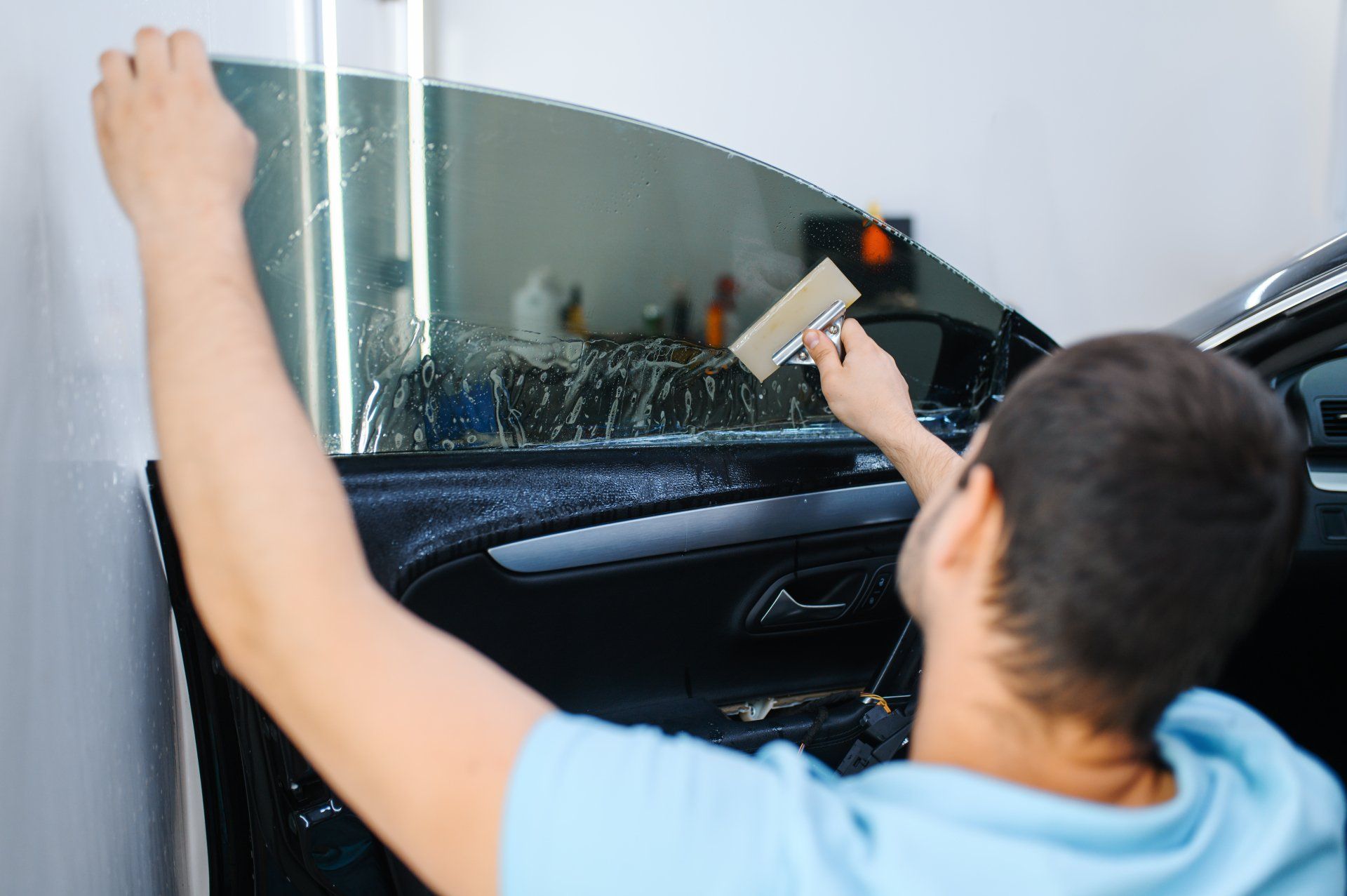The Process of Professional Home Window Tinting Explained
From choosing the right movie kind to the meticulous prep work of home windows, each action plays a critical role in accomplishing a remarkable application. Adhering to these initial preparations, the mindful cutting and application of the movie need accuracy to prevent imperfections.
Selecting the Right Home Window Film
The first factor to consider is the type of film, which can range from dyed, metalized, to ceramic films (window tinting). Dyed movies mainly supply personal privacy and visual enhancement, while metalized movies mirror warmth and UV rays, improving power efficiency.
Following, think about the film's Visible Light Transmission (VLT) percentage, which identifies just how much light goes into the space. A lower VLT supplies higher privacy and warm rejection but might decrease all-natural light dramatically. In addition, the movie's solar warm gain coefficient (SHGC) is important; a lower SHGC indicates much better thermal performance, aiding to keep interior convenience.

Preparing the Windows
Once the ideal window film has actually been picked, the following step is extensively preparing the home windows for installment. This prep work is vital for accomplishing ideal adhesion and ensuring a remarkable appearance post-installation.
The initial job includes cleaning up the windows diligently (window tinting). A high-grade glass cleanser is vital, preferably one that is ammonia-free to prevent damaging any kind of window seals or color materials. Using a lint-free towel or paper towels, specialists should get rid of any dust, dirt, or oil, paying unique interest to the sides and edges where debris usually collects

Cutting the Movie
An exact strategy to reducing the movie is essential for making certain an ideal fit on the ready home windows. This action requires both skill and focus to detail, as errors can result in unattractive spaces or overlaps that concession the aesthetic and useful qualities of the tint.
Prior to cutting, the professional need to measure the home window measurements accurately, making up any distinct forms or shapes. It is recommended to make use of top quality home window movie, as this product look at here now has a tendency to be more forgiving during the reducing procedure. The film is usually laid level on a clean, smooth surface, and a sharp utility knife is utilized to make certain clean edges.
To accomplish optimum results, numerous experts make use of templates created from previous setups or use software to develop accurate patterns. A common method entails including an extra margin to the template, enabling for adjustments throughout the application stage.
Additionally, reducing the movie in a regulated setting decreases the threat of impurities impacting the glue side. By sticking to these thorough techniques, home window tinting specialists can make certain that the movie not only fits perfectly yet also carries out efficiently in time, enhancing both appearance and performance.
Using the Color
After meticulously reducing the movie to the right dimensions, the next step involves using the color to the window surface. This procedure starts with making certain that the window is tidy and without any kind of dirt, debris, or have a peek at this site residues that can affect bond. A customized cleaning service is commonly made use of, complied with by complete drying with a lint-free cloth.
As soon as the surface is prepared, the installer will carefully position the color movie against the glass. It is crucial to align the movie precisely to avoid misplacement, as any errors can cause a less than professional look. To facilitate this, the installer might use a light haze of application service on the adhesive side of the movie, enabling mild repositioning if necessary.
Utilizing a squeegee, the installer will then begin to push the film onto the glass, functioning from the center in an outward direction to eliminate air bubbles and make sure a firm bond. This strategy is important, as it guarantees a smooth and perfect finish. Throughout the application, interest to information is essential to stop creases or flaws, making certain that the tint not just enhances looks yet likewise gives the desired performance.
Final Evaluation and Treatment
The last evaluation is an important step in the window tinting process, ensuring that the setup meets both aesthetic and practical criteria. During this stage, specialists meticulously take a look at the mounted color for any blemishes, such as bubbles, creases, or misalignments. A complete evaluation also includes inspecting the adherence of the film to the glass, along with its uniformity and overall appearance.
After the evaluation, appropriate treatment and upkeep guidelines are provided to the client. It is necessary to educate them concerning the advised timeline for cleansing the colored home windows, normally advising a wait of a minimum of thirty days after installation to allow the adhesive to cure fully. Clients ought to be educated on suitable cleaning go to website items and strategies, highlighting the avoidance of ammonia-based cleaners that can harm the tint.
Additionally, professionals should advise consumers on the importance of regular maintenance to lengthen the life of the color. This includes periodic look for indications of wear or damages and responding without delay to any type of issues. By ensuring a comprehensive last examination and providing clear treatment guidelines, home window tinting specialists improve customer complete satisfaction and the longevity of their job.
Verdict
The professional home window tinting process incorporates several vital actions that guarantee high-grade results. Selecting the ideal film type, preparing the windows diligently, accurately cutting the movie, and applying it with accuracy are essential for accomplishing a perfect coating.